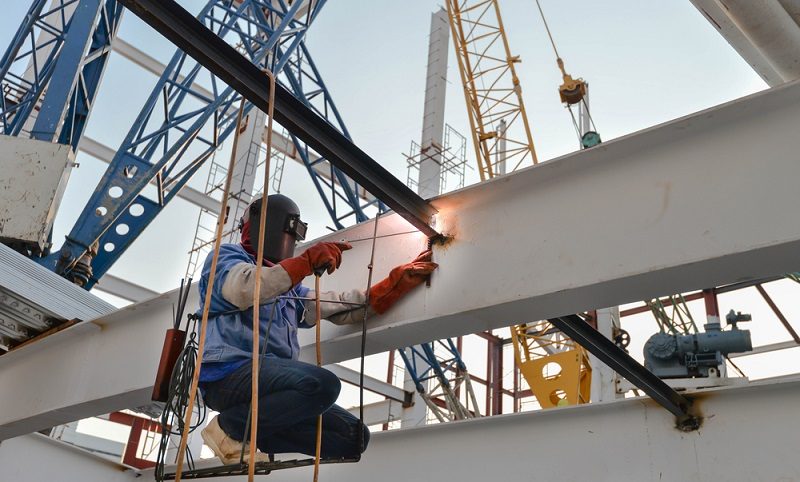In the fast-paced world of construction, meeting deadlines is crucial. Delays can lead to higher costs and missed opportunities. One effective way to stay on track is by using structural steel welding. This method can speed up your construction timeline without sacrificing quality. In this blog post, we’ll explore how structural steel welding can enhance your project efficiency and help you meet your deadlines. We’ll also compare it to other methods and highlight its benefits.
Construction projects often face tight schedules. Completing a project on time is vital for several reasons:
- Cost Efficiency: Delays can lead to higher labor and material costs.
- Client Satisfaction: Meeting deadlines keeps clients happy and can lead to repeat business.
- Project Coordination: Timely completion ensures that other stages of the project can proceed without interruption.
Structural steel welding is a technique that can significantly impact your project’s timeline. Let’s dive into how it works and why it’s beneficial.
What is Structural Steel Welding?
Structural steel welding involves joining steel parts to create a strong, durable structure. This technique is commonly used in buildings, bridges, and other large structures. Key aspects of structural steel welding include:
- Steel Fabrication: Cutting, bending, and putting together steel parts.
- Welding Techniques: Using heat and pressure to fuse steel parts.
- Quality Assurance: Ensuring that welds meet specific standards for strength and durability.
By understanding these elements, you can see how structural steel welding fits into the broader context of construction.
Benefits of Structural Steel Welding
Faster Assembly
Structural steel welding allows for quicker assembly compared to traditional methods. Here’s why:
- Pre-fabrication: Steel parts can be made off-site and then quickly put together on-site.
- Reduced Manual Labor: Welding reduces the need for time-consuming tasks like bolting or riveting.
- Efficiency: Skilled welders can complete joints quickly and accurately.
Enhanced Strength and Durability
Welded joints are often stronger than those created by other methods. This strength can reduce the need for extra supports and reinforcements, further speeding up the construction process.
Versatility
Structural steel welding is highly versatile. It can be used in various applications, from skyscrapers to industrial buildings. This versatility means that welded structures can be easily adapted to meet the specific needs of your project.
Cost Savings
While welding requires skilled labor, the overall cost savings can be significant. Reduced labor costs, fewer materials, and faster project completion all contribute to lower overall expenses.

Choosing the Right Welding Service
To maximize the benefits of structural steel welding, it’s essential to choose the right welding service. Here’s how to find the best one:
Research and Reviews
Start by searching for “metal fabrication near me” or “Welding Services Houston.” Look for companies with strong reviews and a good reputation.
Certifications
Ensure the welding service has relevant certifications, such as AWS (American Welding Society) certification. This ensures they meet industry standards.
Experience
Choose a company with lots of experience in structural steel fabrication. Experienced welders are more likely to deliver high-quality results.
Tip: Contact several companies to compare their services, pricing, and turnaround times.
Comparing to Other Methods
Traditional Methods
Traditional methods like bolting or riveting can be time-consuming and labor-intensive. They may also require extra materials and supports, increasing costs and project timelines.
Modular Construction
Modular construction involves creating components off-site and assembling them on-site. While this method can be efficient, it may not offer the same level of strength and durability as structural steel welding.
Pre-engineered Buildings
Pre-engineered buildings use pre-made components for quick assembly. However, they may lack the customization and flexibility of welded structures.
Why Welding is Superior
Structural steel welding combines the best of these methods. It offers the speed and efficiency of modular construction with the strength and durability of traditional methods. Additionally, it provides the flexibility needed for customized projects.
Quality Assurance in Structural Steel Welding
Ensuring quality is crucial for the success of your project. Here are some best practices for quality assurance in structural steel welding:
Pre-weld Inspections
Conduct inspections before welding begins to identify any issues with materials or setup. This can prevent problems later in the process.
Skilled Welders
Hire skilled, certified welders who have undergone rigorous training. Their expertise ensures high-quality welds.
Regular Testing
Conduct regular tests to ensure welds meet specific standards. Common methods include:
- Visual Inspection: Checking for visible defects.
- Ultrasonic Testing: Using sound waves to detect internal flaws.
- Radiographic Testing: Using X-rays to inspect welds.
Continuous Monitoring
Monitor the welding fabrication process to ensure it stays within specified parameters. This includes checking heat, pressure, and materials used.
Case Studies: Successful Projects Using Structural Steel Welding
Skyscraper Construction
In a recent skyscraper project, structural steel welding played a crucial role. Pre-fabricated steel components were quickly welded on-site, reducing construction time by 30%. The result was a strong, durable structure completed ahead of schedule.
Industrial Buildings
An industrial facility needed to expand its production capacity quickly. By using structural steel welding, the project was completed in half the time compared to traditional methods. The welded joints provided the necessary strength for heavy machinery and equipment.
Bridges
A bridge project required a robust and durable structure. Structural steel welding was chosen for its strength and speed. The project was completed on time, with welded joints providing the necessary support for heavy traffic loads.
Conclusion: The Future of Construction with Structural Steel Welding
Structural steel welding is transforming the construction industry. Its speed, strength, and versatility make it an ideal choice for a wide range of projects. By choosing the right welding service and following best practices for quality assurance, you can ensure your project stays on track and meets all deadlines.

